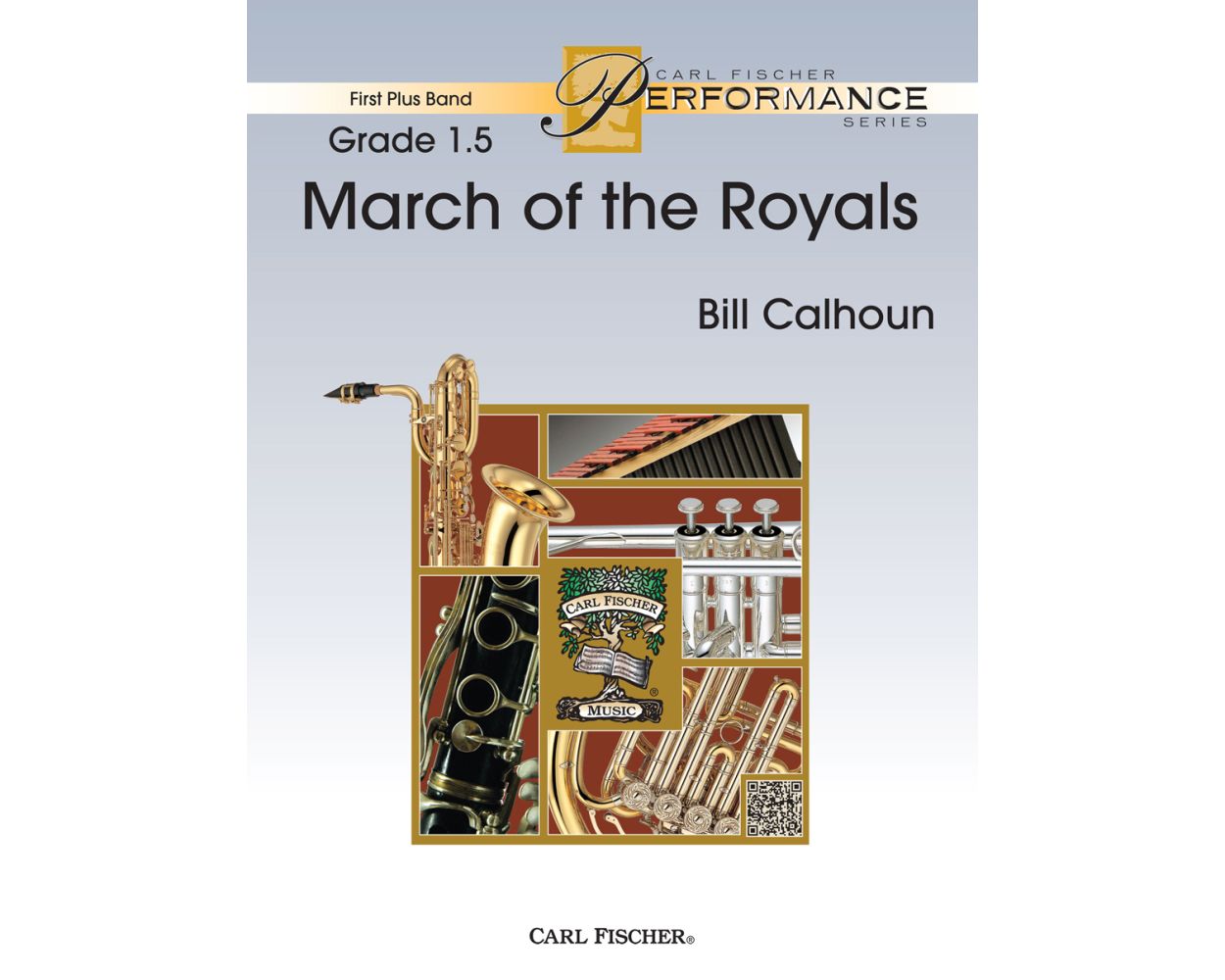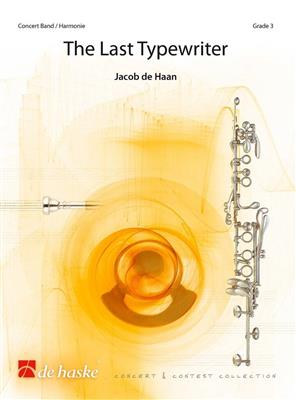Results
-
 £45.00
£45.00March of the Royals - Bill Calhoun
March of the Royals is a concert march for developing concert bands. Although familiar, with all the ingredients found in a typical march, this piece is written in a more regal and elegant style that is characteristic of English style marches. The piece is written for younger musicians but directors will find that it is carefully scored to help ensembles sound older than their years.
Estimated dispatch 12-14 working days
-
 £40.00
£40.00Flaming Arrow
Flaming Arrow is written for beginning band, and uses only the first six notes learned in most beginning band methods: Bb to G. The piece is cast in C minor; consequently, an alternate trombone part is provided that does not reach out to sixth position. Beginning with mysterious opening material that is used later in the work, the piece then moves to an aggressive up-tempo section with lots of percussion. This is followed by a return of the slow opening material and a gradual accelerando with the sound of tom-toms. The piece ends with a short coda for an energetic conclusion.
Estimated dispatch 12-14 working days
-
 £91.99
£91.99The Last Typewriter - Jacob de Haan
This work describes the history and development of the typewriter in the newspaper world. The typical typing sound is the connecting thread, while a variety of music styles follow one another. In the end, the old familiar writing device is defeated when it has to make way for the computer. The composition features solos for various instruments that accompany the recurring typewriter. In a theatrical context, offering room for original ideas, the musical narrative will come across even better.
Estimated dispatch 7-14 working days
-
£64.99
Phantom Regiment - Leroy Anderson
This work was written by Leroy Anderson in 1951 and premiered by him when he recorded it for Decca. Interestingly, in 1956 the Phantom Regiment Drum and Bugle Corps of Rockford, Illinois changed their original name from the Rockford Rangers after having heard the piece played by a different corps. The music emulates the sound of distant trumpets and soldiers marching, drawing closer to the listener bit by bit. As the music gains strength, the marching and trumpets get louder and after passing the audience, it slowly fades away as they disappear into the distance again. This exclusive Southern band edition by Mark Rogers reintroduces Anderson's enchanting work to new generations of audiences.
Estimated dispatch 7-14 working days
-
 £154.99
£154.99Hidamari - Jan Van der Roost
Edelweiss Brass Orchestra is a Japanese concert band based in the heart of Tokyo, Japan. Founded in 1978, the ensemble has grown from musical strength to strength and in 2018 they commissioned a new work with Jan Van der Roost for their 40th anniversary concert. The title Hidamari could loosely be translated as "In the Sunshine". A short quote from the famous musical The Sound of Music (you got it, 'Edelweiss'!) is a subtle nod to the name of the commissioning ensemble. Hidamari reflects the idea that EBO is like a home for all musicians: together, they are one big family.
Estimated dispatch 7-14 working days
-
 £60.99
£60.99The Willow Tree - Pádraigín Ní Uallacháin
Although this haunting tune has the flavor and sentiment of a traditional Irish folk song, it was composed in 1995 by multifaceted artist Pdraign N Uallachin. Her inspiration for the song was the idea that when we are happy or sad, the elements and the natural world are aligned with our feelings. From the wistful lyrics of the song; Down by the river there's a tall willow tree, who weeps all night for you and me. This evocative setting for band follows this sentiment through peaks and valleys of sound and emotion. Dur: 3:10
Estimated dispatch 7-14 working days
-
 £47.50
£47.50Do-Re-Mi - Richard Rodgers
One of the landmark musicals of all time, The Sound of Music featured a number of enduring melodies - none more popular with musicians in particular than Do-Re-Mi! Here's a clever arrangement that features the melody traded around the band from section to section.
Estimated dispatch 7-14 working days
-
 £174.99
£174.99La Vouivre - Thomas Doss
This spectacular work is based on the legend of La Vouivre - the giant snake. Suitable as a contest or concert piece, La Vouivre is full of sounds effects such as the sound of a snake, as well as short vocal tutti segments. Due to itsexpressive and dramatic nature, this musical symphonic poem is a true masterwork.
Estimated dispatch 7-14 working days
-
 £60.99
£60.99Memento - Robert Buckley
Famed bandmaster Arthur Delamont always programmed a hymn in his concerts and Memento is an homage to that proud tradition. Starting with a simple and reverent solo trumpet and introducing other brass instruments one by one, the introduction has the sound of a brass band. The woodwinds join in and, with the use of rich textures and dynamic scoring, the work builds to a powerful climax and then resolves once again with the solo trumpet. Ideal for festival use, Memento will give your ensemble an opportunity to explore expression and nuance. The second movement of A Tribute to Arthur Delamont, Memento was commissioned by the West Vancouver Youth Band.
Estimated dispatch 7-14 working days
-
 £60.99
£60.99Holiday Bells
The sound of chimes and bells can evoke the Christmas spirit in all of us. This sparkling and joyful medley of familiar carols features a distinctive orchestration and style, and is sure to become a holiday favorite. Includes:Westminster Chimes, The Merry Bells All Ring, I Heard the Bells on Christmas Day and Ukrainian Bell Carol.
Estimated dispatch 7-14 working days
